UGC or user-generated content is any form of content (text, posts, images, videos, reviews, etc.) created by people (not brands) and published on an online or social network
User-generated content has been around since the advent of social networks and customer review sites. But the potential of UGC was only really recognized by brands in 2005, when social networks became mainstream.
Indeed, UGC provides valuable social proof about the level of consumer engagement with a product or service 86% today, more than 86% of existing businesses have included User Generated Content (UGC) in their marketing plans. Unfortunately, not all of them have a solid strategy that truly exploits the true potential of UGC
But in concrete terms,
What is User Generated Content?
- What is its impact on the different marketing aspects of a company?
- What are the different types of user-generated content that exist?
- And how do you implement an effective user-generated content strategy?
We talk about it in this mini-guide entirely dedicated to User Generated Content. Follow along!
Chapter 1: User Generated Content and its impact on brand image
Before discussing the impact of UCG, it would be useful to offer a clear definition of the concept
1.1) What is User Generated Content?
In the world of digital marketing, User Generated Content, abbreviated UGC, refers to content that is related to your company’s brand, but created by someone outside of your staff
It can be a third party, usually a consumer who has written a review or produced any other type of content (videos, podcasts, etc.) about one of your products or services
In other words, if it’s content related to your brand and none of your employees or even a collaborator is the author, then it’s User Generated Content
1.2. 5 Reasons to add User Generated Content to your marketing strategy
At first, companies were cautious about using UGC to represent their brand, and rightly so. It was hard to justify trading perfect-looking professional content for under-worked consumer content
However, as phone cameras have improved exponentially each year and social networks have made UGC easily accessible, it’s no longer something brands can afford to ignore.
Everyday consumers have now become the biggest content creators in the world. Every day, 350 million photos are uploaded to Facebook, 95 million photos and videos are shared on Instagram and more than 500 million tweets are posted on Twitter.
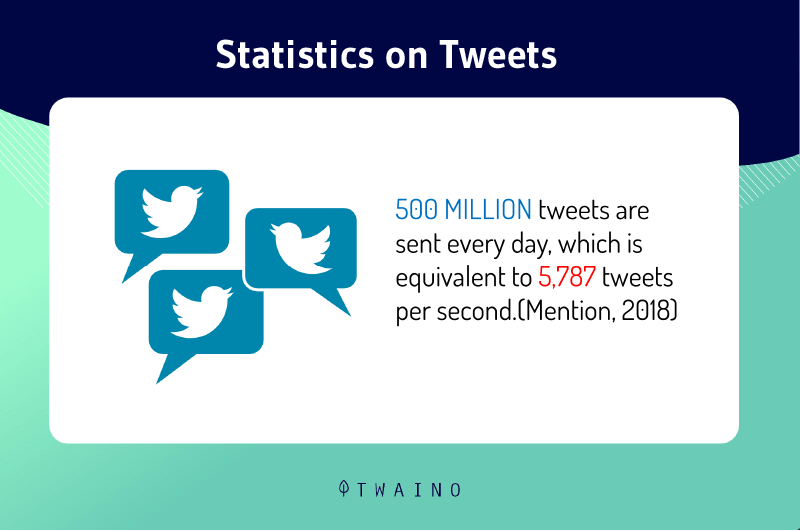
The data shows that user-generated content has become the most trusted, memorable, influential and abundant source of content that marketers can use. There are several reasons for this
1.2.1. UGC is authentic content unlike commercials
Marketers spend a lot of time and money creating the perfect messages and professional images they think consumers want to see. But it turns out that consumers don’t want perfect, they want real.
When asked, 90 % of consumers say authenticity is important in deciding which brands they like and support, and 60 % say that UGC is the most authentic form of content.
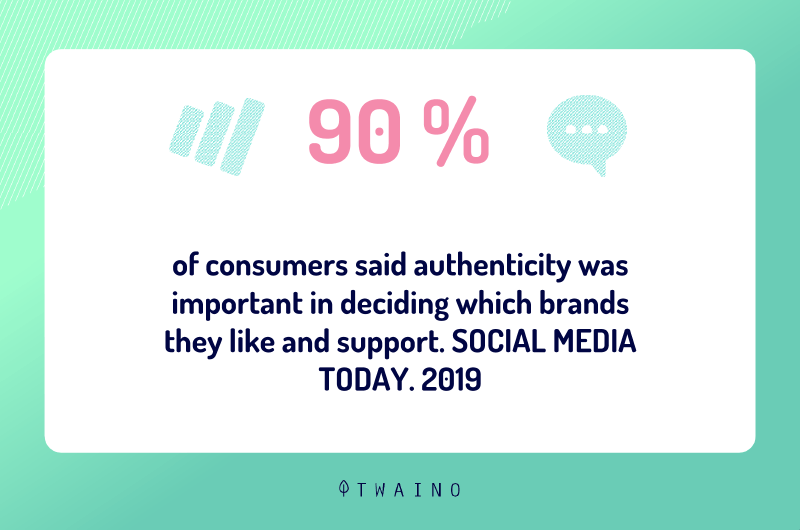
People more readily trust a recommendation from a real person rather than what a brand says about itself. Consumers simply relate more to regular people who look like themselves or people they know. The authenticity that comes from real UGC can’t be faked either
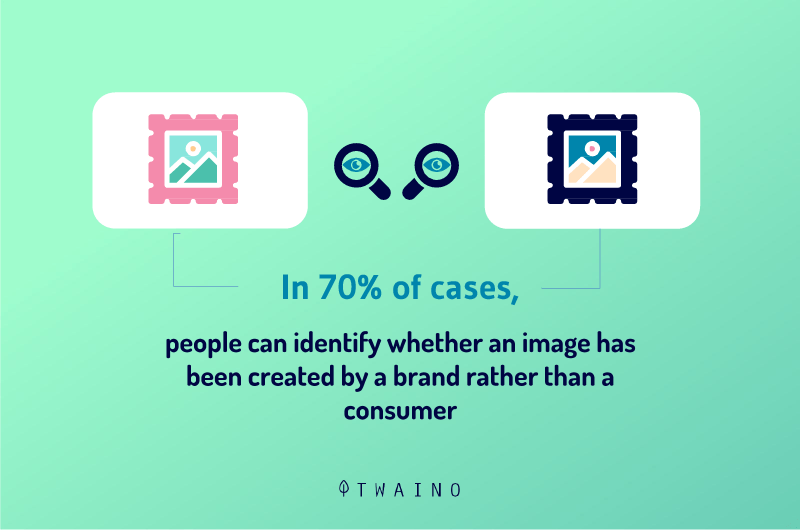
In one study, people could detect whether an image was created by a brand or a consumer 70 % of the time.
1.2.2. UGC inspires brand loyalty
Brands that take advantage of readily available UGC are brands that put their audience first. As a result, UGC has the potential to deepen the connection between the brand and the consumer.
It allows people to feel like a participant in your brand instead of just a spectator. The result of more UGC in your marketing means higher levels of brand enthusiasm and the cultivation of greater brand loyalty.
1.2.3. UGC is more memorable than traditional advertising
Marketers are constantly fighting to cut through the noise to get and keep people’s attention. You can come up with the best message or image, but what good is it if no one remembers it?
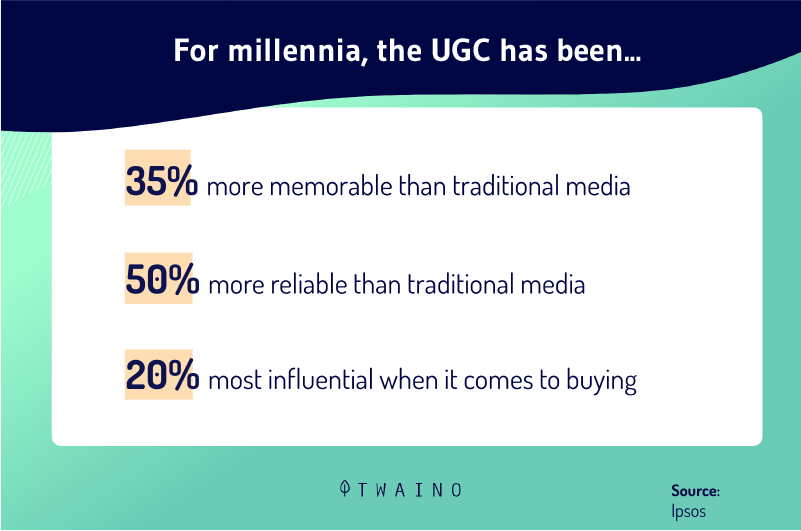
User-generated content has proven to be more memorable than traditional advertising. Millennials, in particular, find UGC 35% more memorable than other media.
1.2.4. UGC builds customer trust
Today, trust is the marketing holy grail that brands seek to gain from their audiences. Of course, it’s also one of the most difficult things to achieve.
User-generated content helps build consumer trust for the reasons mentioned above: it’s authentic and allows for greater interaction between people and businesses
This is because not only can people identify whether an image was created by a consumer as opposed to a brand, but 92% of consumers trust earned media (recommendations from friends, family or peers) more than any other form of content.
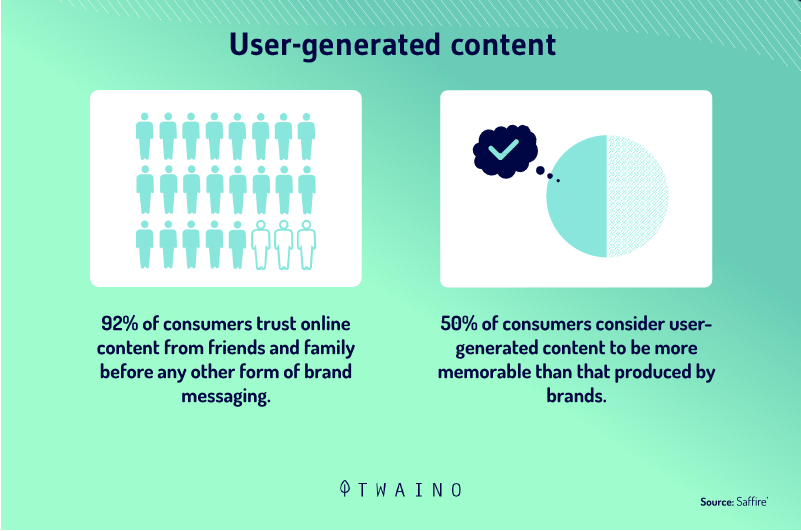
Because UGC is widely recognized, more memorable than other media, and ubiquitous in people’s daily lives, it has become one of the most influential forms of content.
1.2.5. UGC influences consumers and improves conversion rates
The more a brand uses UGC, the more it encourages people to convert. Acting as a powerful source of social proof, the majority of consumers report that their purchase decisions are strongly influenced by user-generated content

In comparison, only a few people report that content from celebrities or social network influencers has a significant impact on their purchasing decisions, making UGC highly influential.
Chapter 2: UGC and SEO
User-generated content provides many SEO benefits to your company’s various channels
2.1. UGC provides search engines with new and relevant content
Imagining and creating new content targeted for SEO is resource intensive and may not always yield the desired results. There is a great need for authentic content that resonates equally with your buyers and search engines
Thus, collecting UGC is a simple way to meet this need with unique and authentic content. Since this content is customer-generated, brands don’t need to use many of their own resources to develop it
The practice of deploying UGC demonstrates that brands are not just talking to customers, but that customers have a way to engage with the brand. For marketers, the results of SEO are unmatched with other marketing tactics
2.2. UGC naturally incorporates the basic attributes of SEO
Sites are optimized for search engines through a system of basic attributes including keywords, titles, backlinks, internal links, etc

In this framework, if we take the example of reviews, customers do all the work while shaping the SEO with appropriate links and keywords. Since customer testimonials tend to be product-centric, customers often include phrases and links associated with the product that naturally help boost SEO.
2.3. UGC naturally helps your site rank for long-tail keywords
Long tail keywords are specific search phrases with low search competition that are much easier to rank for. These keywords consist of phrases that users search for, but that brands may not think to include in their consumer marketing
For example, a beauty retailer may have optimized one of their products for “skin cleanser,” but if they face a lot of competition for that keyword, it’s difficult to rank high
Conversely, “skin cleanser for darker skin tone” may have much less competition and be searched for by users with the specific intent to find and purchase that product
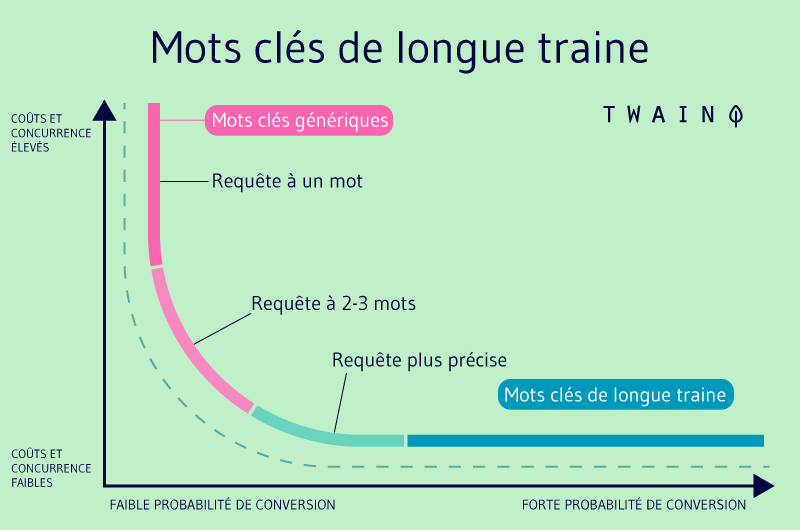
Your users, by posting what they like about your product, can provide insight into how your audience talks about what they are looking for
And knowing which long-tail keywords resonate with buyers makes a huge difference, as it allows you to unify customer opinion by providing content for those keywords for on-site SEO
2.4. UGC boosts optimization on social media
UGC helps with SEO via social media optimization (SMO) on visual platforms like Instagram and news platforms like Facebook and Twitter. UGC gives social media managers new types of content to fill a void of professional images.
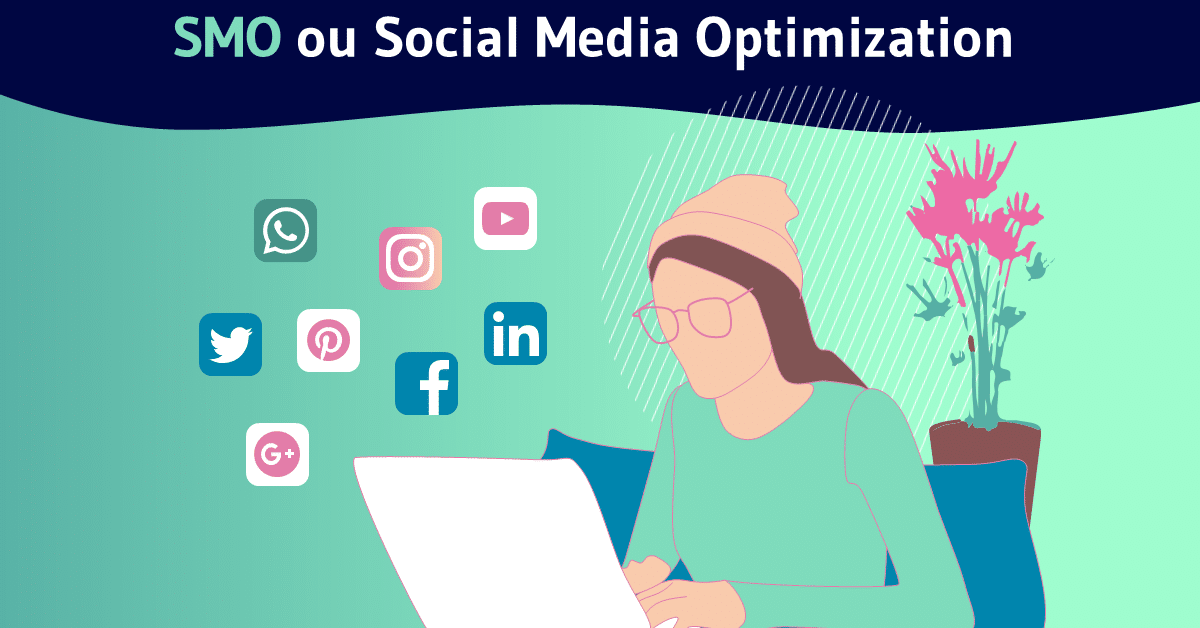
Sharing your customers’ photos or reviews builds trust with your followers, increasing the likelihood of shares, likes and comments. More engagement usually means more traffic from potential new customers looking for a similar experience. For example, user-related topics in a brand’s social footprint will likely get their attention
2.5. Positive UGC helps improve a website’s domain authority
Automated search engine algorithms use bots that search for product reviews and customer testimonials to evaluate a website
In addition, companies like Google employ search quality raters to manually assess a site’s reputation to evaluate key principles such as:
- Mastery of the topic
- Authority of the author
- Truthfulness of content.
These elements can easily be obtained from your customers’ content
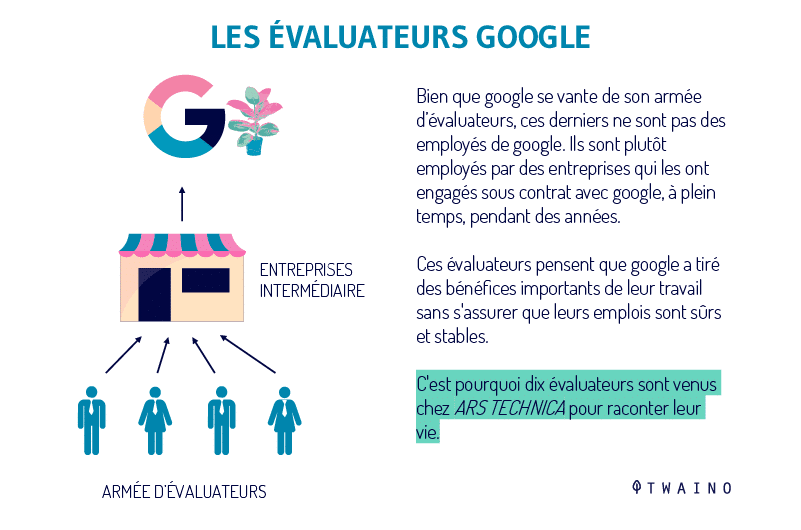
Content submitted by your clients gives marketers a legitimate chance to earn SEO points from both quality rating systems. This tactic should be an essential part of any SEO checklist, as reviews and ratings can make it easier to deliver outstanding results to search engine queries.
Chapter 3: What is the impact on the bottom line?
In addition to having a big impact on SEO, user-generated content also affects your company’s bottom line
3.1. UGC cultivates community
Humans are highly social beings, after all. Brands have learned this, and many companies are setting goals to reintegrate basic human relationships into their marketing strategy. Building an active brand community is a higher priority for companies today than it has ever been before
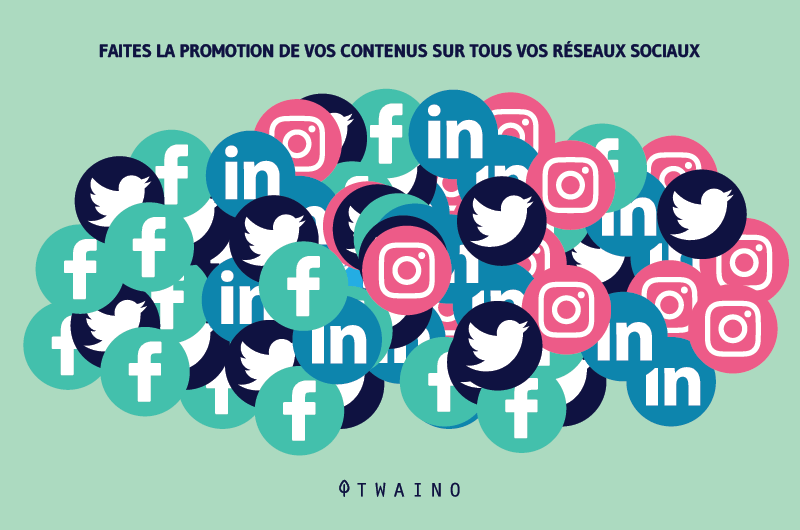
But why? When a brand can inspire a community to form around it, the result is more 1-to-1 interactions between the brand and its followers. The same is true between the subscribers themselves
When there is an opportunity for loyal customers to converse and connect over the love they have for your brand, from a marketing perspective, it’s a big win
Thus, it is noted that user-generated content helps facilitate the sense of community that consumers are looking for
It encourages customers to be excited about your products or services, which makes them want to make a purchase and share their own experience to get involved in that community.
3.2. UGC is scalable
So many digital channels, so much demand for fresh content, but so little time. In today’s digital landscape, it’s hard for companies to keep up with all the channels they’re supposed to fill with high-quality, fun and engaging content.
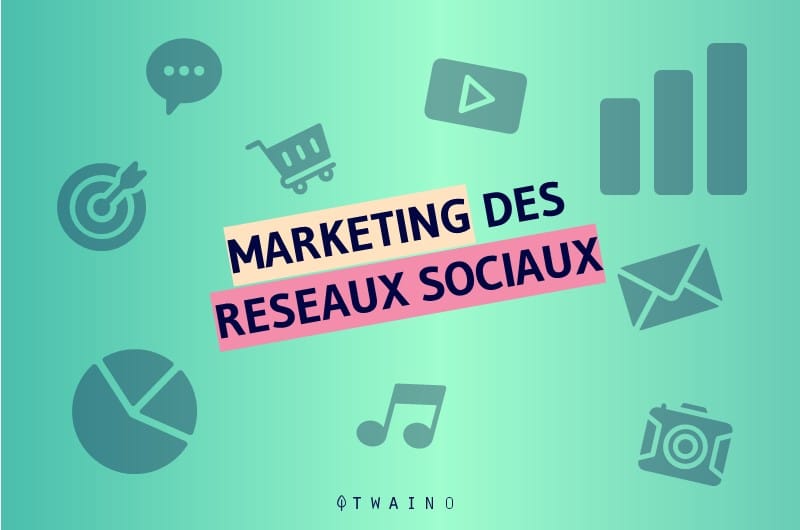
Whether it’s for landing pages, social feeds, digital ads, or billboards, marketers are under a lot of pressure to produce more content than previously expected
Meanwhile, the quality, quantity, and velocity of user-generated content has continued to multiply. UGC is not only an untapped source of potential content for struggling marketers, but it also provides the personalized and visual content experiences consumers want.
UGC helps brands grow their content initiatives easily and seamlessly, especially when they have a robust tool to help them organize and publish all that content.
3.3. UGC is cost-effective
In addition to all of the above benefits, using UGC is also cost-effective
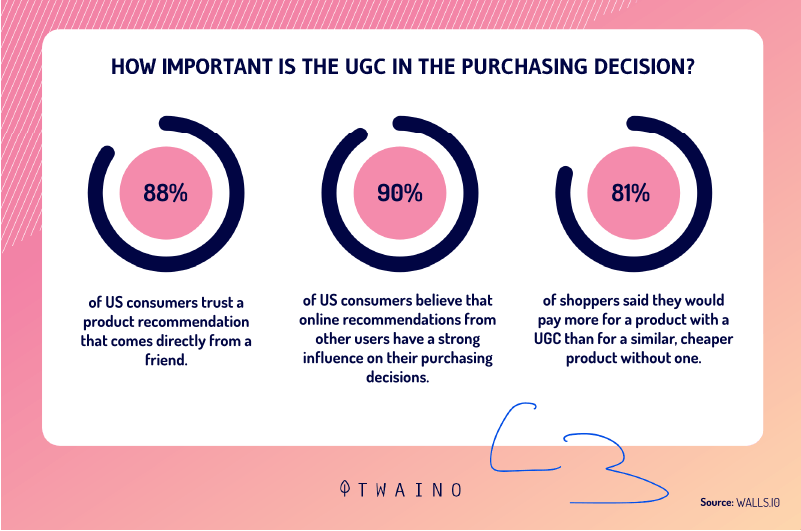
Instead of spending a lot of time and money hiring creative teams to develop a limited number of content assets, only to have to do it all over again in a month or two (or even a few weeks), this work can now be outsourced to everyday people who are already enthusiastically talking and publishing your business online.
With UGC, content-starved brands have access to the wealth of assets they need without having to pay big bucks for studios and professionals. If people are already creating positive content without being asked and, for the most part, doing it for free, UGC as a cost-effective marketing strategy is a no-brainer.
Chapter 4: Types of User Generated Content
By now you know all the benefits of user-generated content and why consumers prefer UGC to brand-generated content. But what types of user-generated content are there?
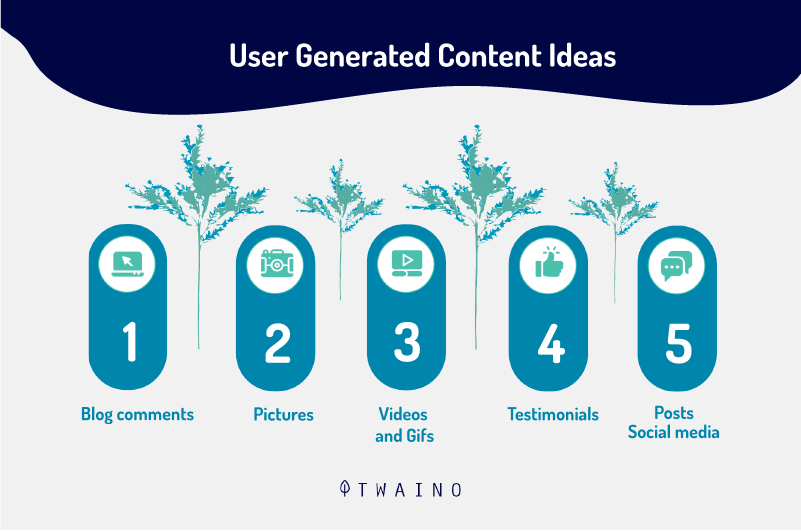
UGC can be anything from blog comments and product reviews to high-quality user-generated video footage. Generally speaking, UGC falls into two categories: visual UGC and ratings and reviews.
4.1. Visual UGC (photos and videos)
Colorful images and video clips are essential for consumers, especially when it comes to buying items online. When people can’t physically inspect a product, they rely heavily on visuals and videos to see if it’s something they would want to use (like a pair of shoes) or experience (like a restaurant or hotel).
This is especially true for younger groups who report being influenced by photos and videos to make purchasing decisions.
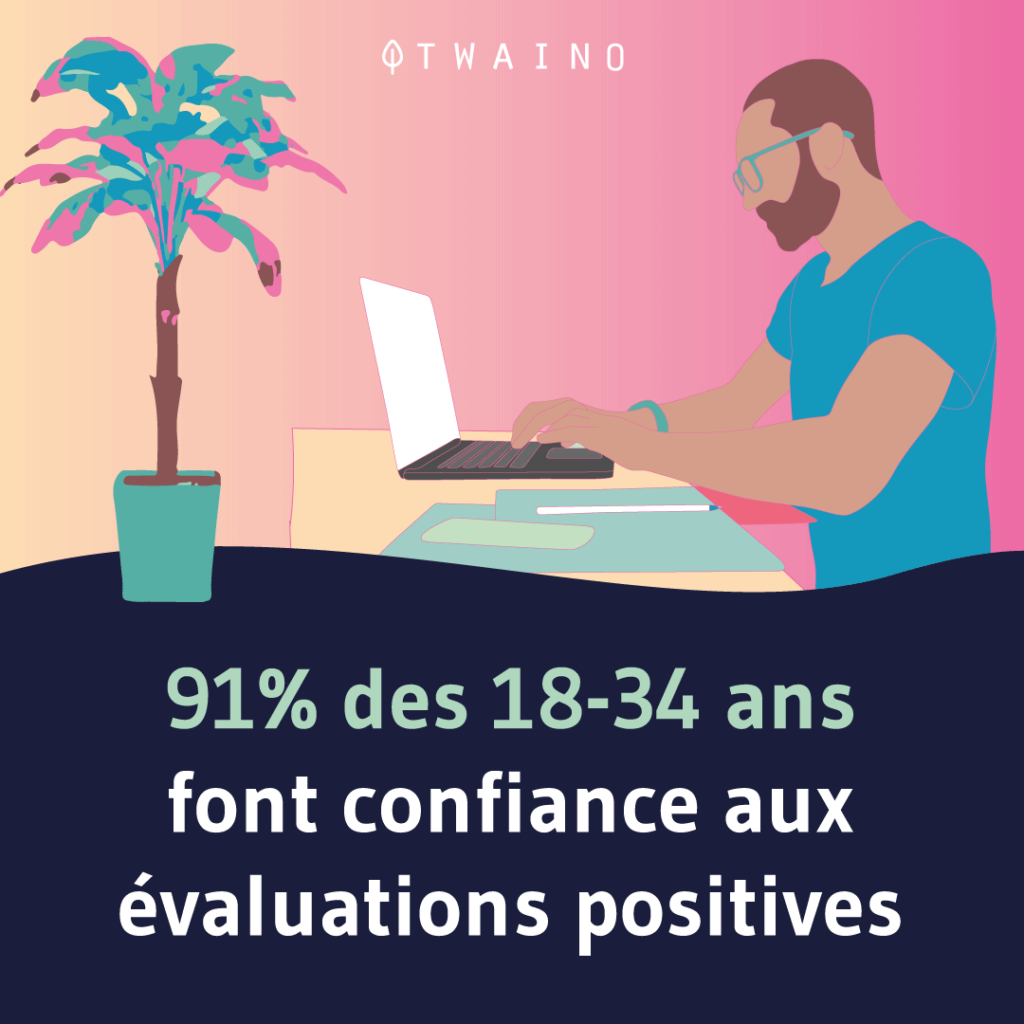
Visual UGC can come from:
- Customers: people who praise your product and post images of it online are among the best UGC brands. Leveraging organic posts from everyday people using your product in a real-world environment offers inspiration and influential social proof to buyers.
- Advocates: these are the people who not only buy your products, but are also enthusiastic and highly engaged with your brand, perhaps active in your brand community or loyal customers. Since advocates are so passionate and close to your brand, you can often directly request that they create specific types of UGC around specific campaigns, products, etc.
- Employees: good UGC also comes from the people who represent your brand on a daily basis. Also known as EGC (employee-generated content), this type of content can provide insight into your company’s culture. It also gives your audience a unique, compelling, and expert perspective on your company.
4.2. Customer ratings and reviews
Starting in the late 1990s, sites like Amazon, Tripadvisor, and Yelp began allowing customers to post reviews of a product or service for others online to see
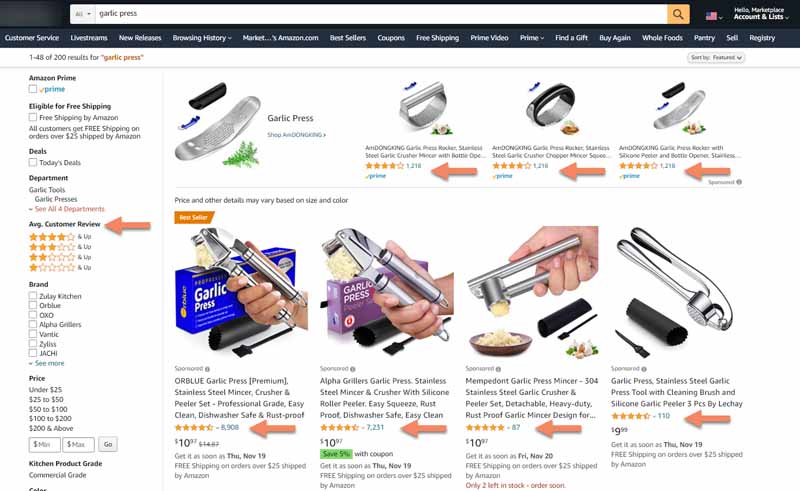
Source searchenginejournal
While it may not be as aesthetically pleasing as visual content, UGC in the form of customer ratings and reviews is very important. After all, over 88% of shoppers incorporate reviews into their online purchasing decisions.
Customer reviews and product ratings add an extra layer of assurance before people decide to buy, which helps build customer trust and your company’s reputation.
Chapter 5: The Challenges of User-Generated Content
In this chapter I give you some of the most common obstacles brands will have to overcome to effectively use UGC in their marketing campaigns.
5.1. Rights to User-Generated Content
As brands increasingly turn to UGC, the topic of managing user-generated content rights has become a more important topic of discussion. Businesses need to ensure that all content is used legally, meaning getting permission from the people posting the content.
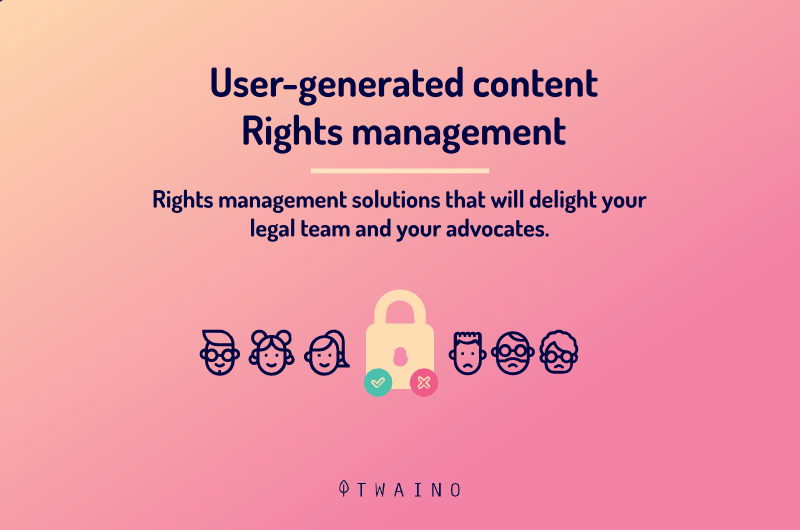
Despite the fact that most UGC is public, brands still need to be wary of the permissions and terms of use of social media platforms.
Stackla provides a number of rights management workflows that allow brands to contact content creators and request rights to certain content
Stackla also has a direct upload feature, which allows users to submit a UGC directly via a form. They can dictate their own terms and conditions if they prefer the content they create for you not to be public
5.2. Scalability
Scalability is a benefit of UGC, but it can also be a challenge. When marketing teams decide to manually collect user-generated content, it can quickly become complicated and messy
Scouring the Internet for UGC is a huge time investment. It requires asking users for permission one by one, then uploading all of those assets to a centralized location and organizing them.
5.3. Get quality UGC
Finding that perfect UGC image can sometimes feel like searching for a needle in a haystack. While brands now have unprecedented access to UGC, not all of the content pouring in is of the highest quality.
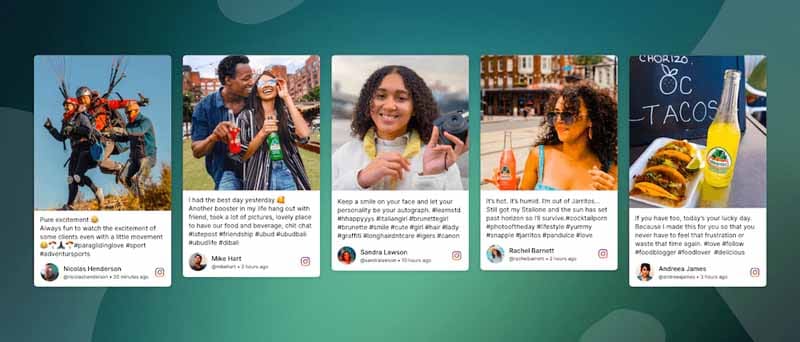
Source taggbox
Several brands and agencies interviewed said that finding high-quality user-generated content is a difficult task
To get the best quality images from your audience, you can do three key things:
- Define the type of visuals you want
Establish within your company’s marketing team what UGC means for your brand. Do you want media with a specific type of composition for certain channels or of a particular product or service? Understanding this will help you know what types of visuals you want from your audience.
- Be specific with content requests
Remember to always be clear and concise with your content requests. Once you’ve decided what types of UGC are most important to your brand, inspire your audience to create it by showing them examples of what it could look like.
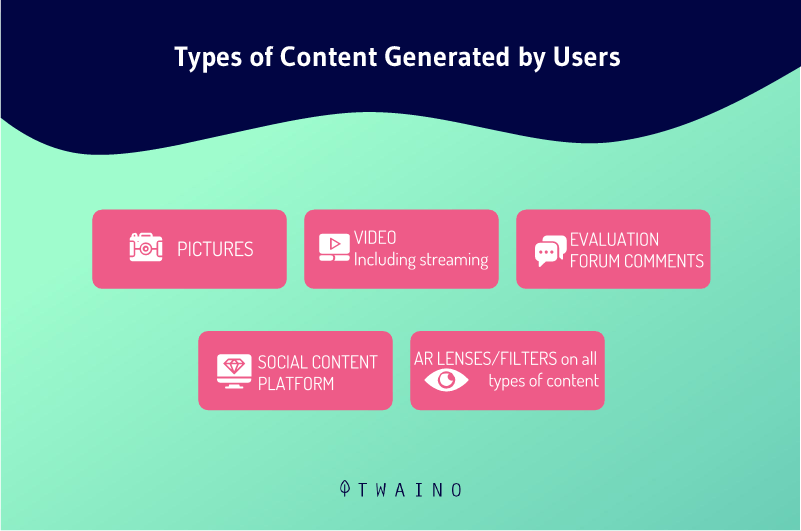
- Build a community of creators
To proactively develop a long-term UGC strategy, try to get your passionate customers to become an active community of content creators
Create a centralized destination to communicate with them online, then explicitly ask them to create and share the types of content your brand needs
Not only will this help you grow your content library, but it will also help you build deeper connections with your best customers.
Chapter 6: How do you implement an effective user-generated content strategy?
In this chapter, I show you the six steps to implementing a user-generated content strategy for your brand to stand out.
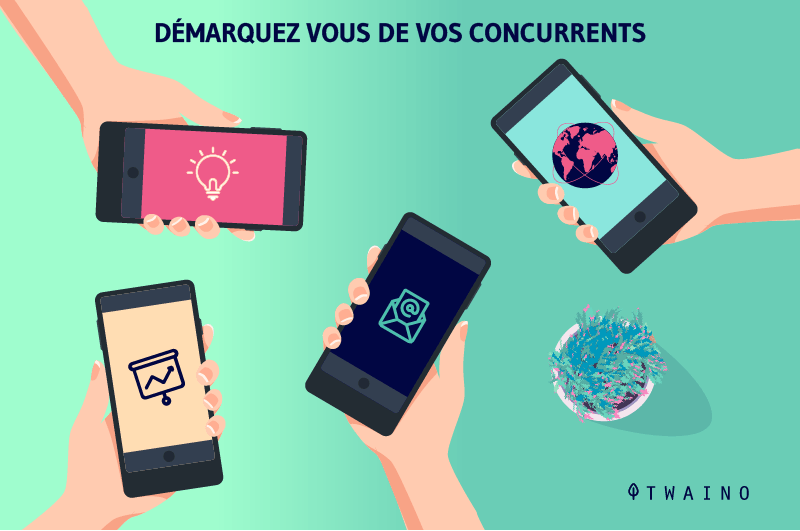
Here are the individual points:
- Set specific goals and objectives for user-generated content
- Choose the best social networks for your campaign
- Let your audience know what type of content you want; and
- Create a system to collect user-generated content
- Engage with your audience and build a better community
- Analyze and measure the performance of your user-generated content.
6.1. Set specific user-generated content goals
Just like your other marketing strategies, your user-generated content plan needs specific goals and objectives to succeed
Unfortunately, out of most marketers who have embraced user-generated content, only a minority have successfully implemented a solid strategy
That’s why it’s important to clearly define your UGC campaign goals before you begin
Here are some user-generated content goals you can use
- Increase brand awareness
- Increase conversion rates: for example, a campaign that collects customer reviews, like Amazon’s, can help you increase social proof and drive customers to buy.
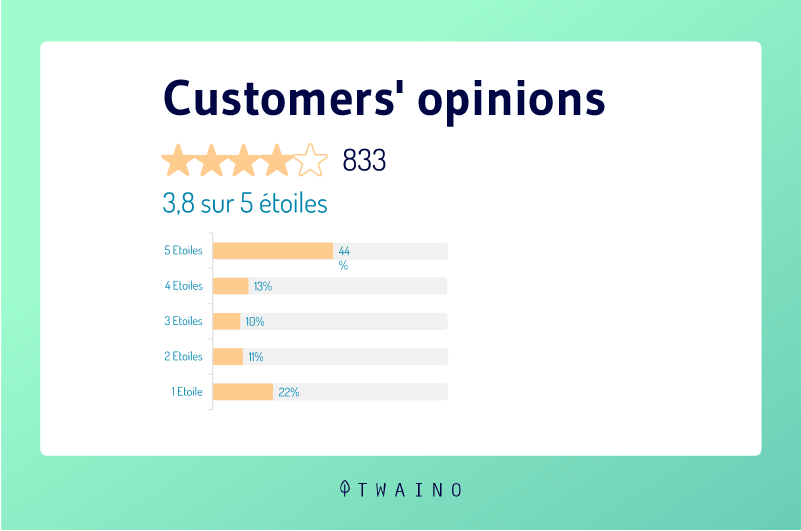
- Save time and money on content creation.
- Etc
6.2. Choose the most effective social networks for your campaign
Depending on your goals and target audience, you need to select the most appropriate social networks for your campaign
What type of user-generated content works best on each network? Closely related to the choice of social network, you’ll need to decide what type of content you’re looking for
- Facebook: Great for sharing video content and stories about your brand
- Twitter: ideal for images, including GIFs, overcoming limited character space.
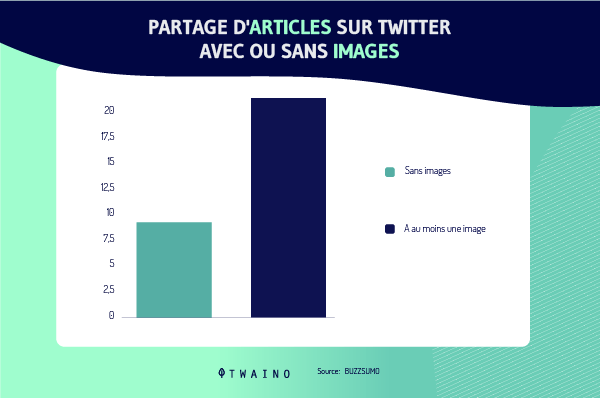
- Instagram: the go-to choice for most user-generated content. You’ll need to know how to reschedule, use Instagram Explore and find content via hashtags.
- LinkedIn: maybe not as obvious as other networks, but useful for promoting user content that fits your brand.
6.3. Find and aggregate user-generated content
For many brands, the best answer is to opt for a UGC platform that can do the heavy lifting for them
Stackla is a great option that helps brands find the type of user-generated content they want. They can then aggregate it, manage the rights and publish it across all their different channels
However, how do you encourage people to create user-generated content? Sometimes getting the specific content your brand craves takes a little effort. Here are some best practices for encouraging your audience to create amazing user-generated content for your brand:
- Ask people to create UGC
It’s pretty simple, but if you want people to get creative and create a lot of pretty content for your business, just ask them.
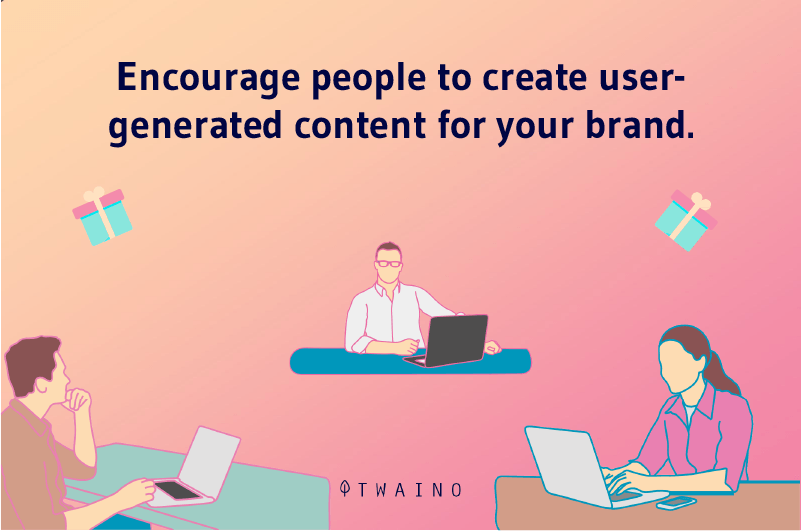
- Make it simple
The fewer barriers there are to sharing UGC, the better. Ask your marketing team to create a simple, yet creative hashtag that people can use whenever they post about your brand, product or campaign
Clearly tell them what your username and social media handles are so they can identify you in their posts. You can even give people a way to submit UGC directly to your site.
- Run a contest
If you’re having trouble getting enough UGC, try incentivizing people by running an online contest where your brand picks the winners, and maybe even offering a giveaway
- Host an event
Host a virtual or in-person event with fun activities that encourage people to generate UGC and be as creative as they want
6.4. Promote the content
There are several ways in which you can promote user-generated content
6.4.1. Showcase user-generated content on your website
Your company’s website is a place full of opportunities to insert user-generated content
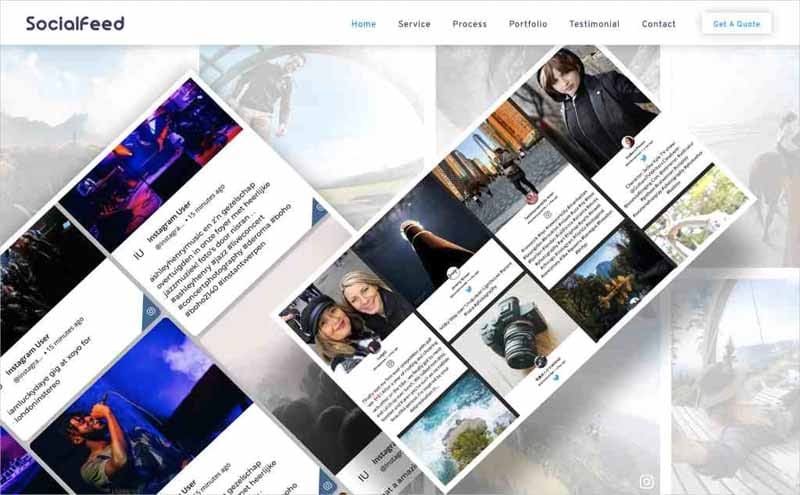
Source taggbox
Posting authentic UGC on your website’s homepage can show people the benefits of your product or service at a central touchpoint.
6.4.2. Product detail pages (PDP)
Product detail pages are among the most crucial pages, especially for e-commerce brands.
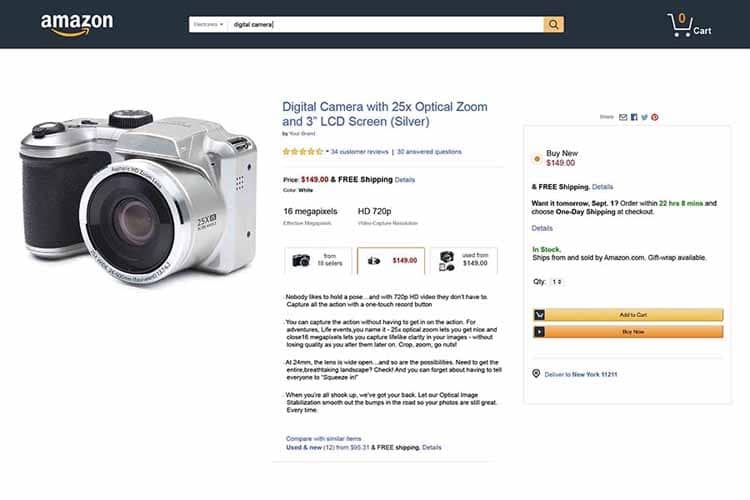
Source feedvisor
6.4.3. Blog
Your blog is both a place to showcase visual UGC and share customer stories. This is a strategy that many companies use regularly. Brands use UGC as heroic images for many of their posts as a compelling way to grab readers’ attention.
6.4.4 Integrate UGC into your e-mail marketing campaigns
There are many types of emails that marketing teams send to target audiences. Here are some examples of different ways brands are using UGC in their email campaigns:

- Newsletters
- Promotional emails
- Community emails
- Transactional emails
Once a customer is ready to buy or has already converted, transactional emails are a way to bring them back and continue to engage them
- Shopping cart abandonment emails
By connecting UGC to cart abandonment emails, brands can inspire those who have left the site before making a purchase by showing them what their purchase will get them.
- Post-Purchase Emails
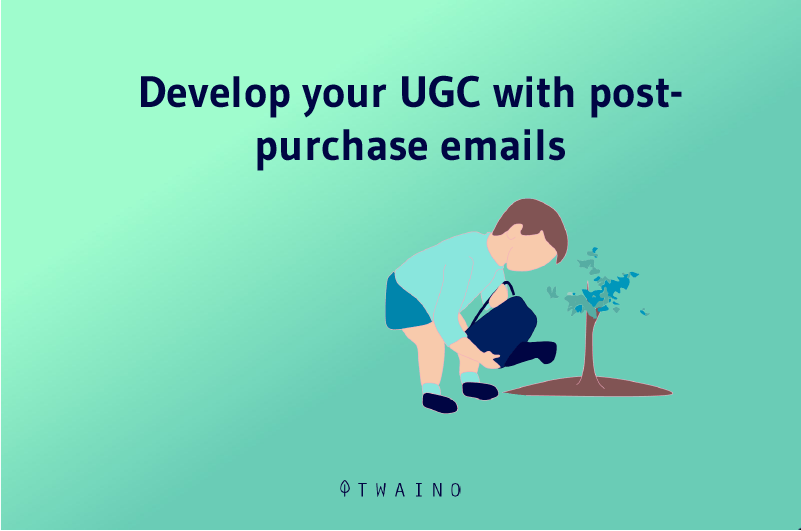
To better understand post-purchase emails, let’s look at Expedia Hong Kong. The company is constantly looking to improve their customer experience and they have done so by integrating UGC into post-purchase emails
To further engage customers even after a booking, Expedia included relevant UGC for each destination, customized for each customer based on where they booked.
6.5. Analyze and measure the performance of your user-generated content
Finally, you need to go back to your goals to see if your user-generated content strategy is working.
- Are you increasing brand awareness?
- Are you getting more conversions?
- Are you saving money on content creation?
When you evaluate submitted content, you may find that customers are using your products or services in ways you hadn’t considered. Or, you might see that they like to use your product in combination with another product, which could lead to a potential partnership opportunity with another brand
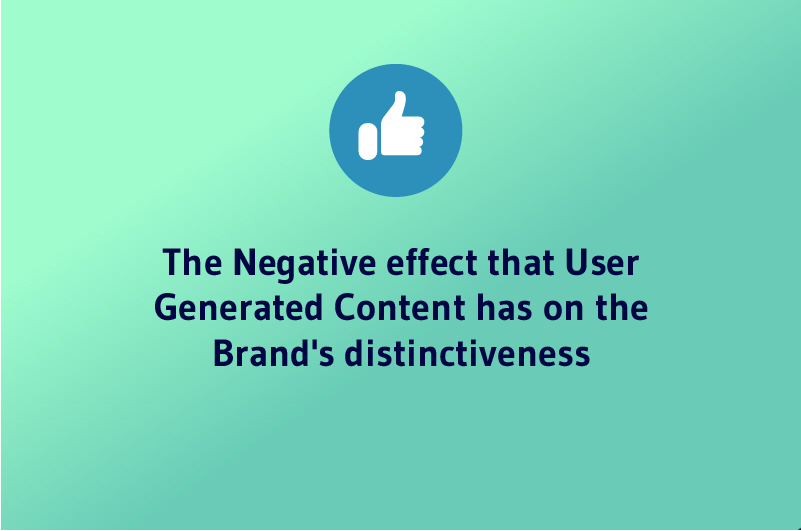
On the other hand, you could get content that is harmful to your brand as well as any negative vibes. Be sure to take in any valid criticism, but strive to present the positive content
6.6. Don’t forget about negative UGC
It’s hard to get only positive reviews about your products. That’s why it would be wise to set up a UGC filtering system so you don’t post people who criticize or attack your brand
The first thing to do with these negative UGCs is to check their veracity. If it’s a user who is having trouble using your product properly, this is your opportunity to steer them in the right direction. If he finds satisfaction, you will have succeeded in turning a negative UGC into your advantage
This will improve your credibility and the quality of your products with users. If not, it could be a person who is simply trying to sully your image by bad faith. It would be better not to let these UGC circulate.
Therefore, keep an eye on your UGC and only include positive reviews in your campaigns
Chapter 7: Some examples of successful UGC strategies
Some companies have understood the importance of UGC in a branding strategy and have come up with ingenious ideas to take advantage of the content generated by their users
7.1. The GoPro camera
In 2005, Nick Woman had the idea to launch his GoPro camera brand. What sets his camera apart is that it is equipped with an external protection that can withstand violent shocks and water
But the brand does not stop there, it creates an instagram page to allow its customers to share the moments they were able to film with GoPro cameras

Source GoPro
The idea was a huge success, exploding the brand’s visibility and sales
7.2. Tripadvisor
Tripadvisor has implemented a marketing strategy that runs a lot on UGC. By visiting the official website of the platform, you can consult a pile of reviews on hotels, restaurants and many other places
For each of the destinations you search on Tripadvisor, you’ll discover a ranking of the best surrounding restaurants, activities to do during your stay and much more
As you can already guess, all this information is available on the company’s platform thanks to the participation of those millions of users who do not hesitate to share their travel experiences
It is a very active community that leaves notes, comments and even if possible photos of their stay

Source Tripadvisor
The concept has been so successful that the majority of users consult the reviews first before booking a flight or a hotel room
We could compare Tripadvisor’s strategy to other companies such as Booking or Hotels.com
7.3. LEGO
LEGO is a brand that offers small plastic pieces that can be put together to create an object
To get closer to its customers and improve its visibility, the brand has launched the Kronkiwongi concept, which involves participants posting a photo on social networks of an unusual object they have managed to assemble

Source CampaignLive
Thanks to this project, LEGO has been able to reach 27 million people around the world, exploding the reactions on its social network pages
So there’s no shortage of ideas for taking advantage of UGC. It’s up to you to find the right touch to add to your UGC campaign to get closer to your audience and improve your brand awareness.
Chapter 8: Frequently asked questions about user-generated content
8.1. Can you use User Generated Content in your marketing strategy?
Yes absolutely, and in fact it is recommended for a number of reasons such as
- UGC is an authentic content unlike commercials
- UGC makes it easier for people to stay loyal to the brand
- UGC is more memorable than traditional advertising
- UGC builds customer trust
- UGC influences purchasing decisions and can boost your conversion rate
- Etc.
8.2. Can user-generated content improve my website’s SEO?
Yes, UGC can be a great advantage for your website because
- Unlike content creation, collecting UGC does not require enough investment, but still remains as new content in the eyes of search engines
- By creating UGC, users already naturally integrate some basic SEO techniques such as keyword optimization, backlinks creation, internal linking, etc.
- By mentioning your brand in conversational queries, users naturally improve your positioning on what are called long tail keywords in SEO.
- Each positive UGC that your brand receives appears as a point that improves the Domain Authority of your site
- And so on.
8.3. What are the different types of User Generated Content that we can find?
There are two (02) types of user generated content
- Visual UGC (photos and videos)
- Ratings and customer reviews
8.4. What difficulties can be encountered during a UGC campaign?
- Despite the fact that most UGC is public, brands must ensure that the content is used legally, i.e. obtain the authorization of the people who publish this content.
- Scouring the Internet for UGC is a huge time investment. It requires asking users for permission one by one, then uploading all of those assets to a centralized location and organizing them.
- Several brands and agencies interviewed said that finding high-quality user-generated content was a difficult task
8.5. How to implement a UGC strategy?
- Define goals for your UGC strategy;
- Choose the most appropriate social networks for your UGC campaign (Facebook: ideal for sharing videos and stories about your brand. Twitter: ideal for images, including GIFs. Instagram: the go-to choice for most UGC);
- Choose relevant UGC for your campaign;
- Promote the chosen UGCs;
- Analyze and measure the performance of your UGC campaign;
- Don’t forget the negative UGC
Conclusion
Once you have the right strategy in place to help you find, manage and display user-generated content, you’ll find that it’s the most cost-effective and scalable way to create the personalized, visually appealing content experiences that consumers are looking for
In turn, you’ll be rewarded with positive marketing feedback and bottom-line impact.
If this article was helpful to you, please feel free to share it with us in the comments
Thanks and see you soon!



